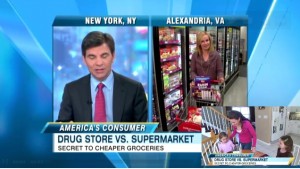 One way we’ve kept expenses low since we added a baby to the family two years ago is by buying most of her items used. Buying second hand made sense to us on many levels. For one thing, babies grow and change so quickly that it was easy to find second hand items that looked practically new but cost only a fraction of a new selling price. We realized that buying used was not only a budget-friendly choice but also better for the environment because we were reusing something that had already been manufactured so there were no production or shipping energy costs involved. What we didn’t realize is that our choice to buy used was likely also healthier for our daughter.
One way we’ve kept expenses low since we added a baby to the family two years ago is by buying most of her items used. Buying second hand made sense to us on many levels. For one thing, babies grow and change so quickly that it was easy to find second hand items that looked practically new but cost only a fraction of a new selling price. We realized that buying used was not only a budget-friendly choice but also better for the environment because we were reusing something that had already been manufactured so there were no production or shipping energy costs involved. What we didn’t realize is that our choice to buy used was likely also healthier for our daughter.
According to this Tree Hugger article, “Why Second Hand is Healthier for Your Baby,” second hand items have often lost the dangerous chemicals and emissions associated with new furniture and new clothing. These chemicals are emitted from glues and flame retardants in new furniture and mattresses, and some chemicals are added during standard textile manufacturing and distribution. Because of their faster respiration, faster metabolic rates and larger skin surface to body size ratio, children are at greater risk of harm due to these chemicals.
Sometimes it seems to me that the more I read, the more reasons I find to be freaked out about toxic chemical exposure and all the ill-effects it could have on my child. Sometimes I feel like I am making all the wrong decisions. I don’t want to knowingly expose her to something that is likely going to cause her issues, but I also have to be realistic. Going all-natural and organic takes time, money and effort which any mother could tell you are in short supply. The Tree Hugger article gave me a little peace of mind that when we buy her clothes second hand at least maybe we’re doing one thing right.
(By the way, if you’re looking for a good way to purchase used children’s clothing without spending a lot of time hunting it down, shopping at a consignment sale may be the way to go. You can read more about shopping at consignment sales–which are different from consignment stores–here and here.)


